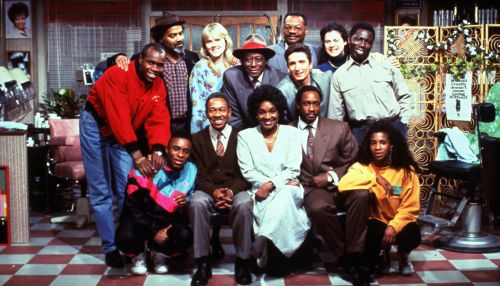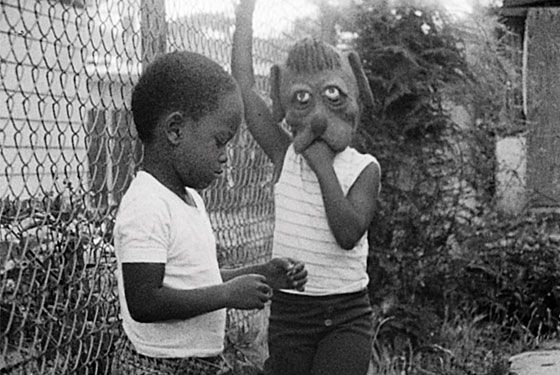Chef!: The Perfectly Imperfect Marital Eroticism of Janice and Gareth by Brigit McCone
Gareth does not “happen to be Black”; the pressure on him to conform to white culture, to avoid limiting his own narrative, mirrors the show’s own need to conform to that culture, to avoid limiting its audience. This conflict is slyly embodied in plausibly deniable food metaphor.
Love & Basketball: Girls Can Do Anything Boys Can Do by Alize Emme
Prince-Bythewood’s ability to draw commentary about the Black family experience in America is so well-integrated we, as the audience, are able to enjoy the emotional ride the characters take us on without the feeling that we’re watching a heavy-handed representation of the social issues of the time.
The Popes and the White Patriarchy in Shonda Rhimes’ Scandal by Jackson Adler
While the show is not overt, at its core the story is about race and gender relations. Race- and gender-specific language is often omitted from the dialogue, yet the meaning is there. Rhimes takes the White patriarchy of America and individualizes its contributors so that neither (most of) the characters nor the audience realizes that they are contributing to harmful White patriarchal norms and internalizing them until the rare moments when they take a step back from the action.
Killer of Sheep A Slice of Life of Watts in the ’70s by Ren Jender
The son then picks on other kids, including his younger sister. Stan’s (nameless) wife yells at the kids too, because of her own frustrations, both with Stan’s depression and the “friends” of his who stop by, like the ones who talk about killing someone they know and ask for his help. After he turns them down she goes off on them, shouting, “Wait just a minute you talk about being a man. Don’t you know there’s more to it than your fists?”
Desmond’s: Roots, Culture, and the Black U.K. Experience by Lisa Bolekaja
What makes Desmond’s unique is its layered and often nuanced portrayal of immigrant Afro-Europeans and their assimilating progeny that are more closely connected to their African roots than any African American TV show I’d ever seen. It also has a cross representation of class in Black British society by showing retired, working class, upper-middle class, college-educated, college-bound, and not college-bound Black people interacting together all the time. Not only are different classes intermingling, but there are also four series regulars who are white, and their whiteness is not the punchline of tired racial jokes.
Debunking the Missing Father Myth in Happyness by Rhianna Shaheen
While many of the film’s events differ from Gardner’s memoir, the film compensates for this with its extremely authentic and loving portrait of a Black father/son relationship that is rarely seen in mainstream media.
Normalizing the Black Family by Atima Omara
When Solomon, Eliza, and her two children are both sold, she is sold away from her children. Their new slave owner, William Ford, (Benedict Cumberbatch), feeling guilty when he hears Eliza’s sobs of protests, tries to buy the children, but the auctioneer refuses to sell the them. William Ford takes Solomon and a devastated Eliza to his plantation, where she continues to cry on the journey to the plantation. When Ford’s wife, Mistress Ford, hears of new slave Eliza’s plight she callously responds, “Oh poor thing, well she’ll get over it in a day or two.”
Smart Guy: Intelligent Black Families and Race-Bending Tropes by BJ Colangelo
The humor isn’t meant to put down white folks, but rather poke fun at the very real actions of white guys who attempt to adopt Black culture simply because it’s “cool.” This sort of behavior has existed in “white sitcoms” for nearly a century (making the Back character the “token” of the show) and it seems the only reason ‘Smart Guy’ comes under fire is because white critics are now seeing the characters they identify with in positions that aren’t of power or virtue.
Alcoholic Aunts, Homeless Cousins, and Depressed Dads: How Mental Illness Is Invisible in The Cosby Show, The Fresh Prince of Bel-Air, and Beyond by Keisha Zollar
Black families can be rich and poor and everything in between on TV, but why can’t we show the mental health crises Black families face?
Eve and the Second Sight by Rachel Wortherley
The story of Eve also elevates the image of Black women as the foundation of families. This element becomes most important as the film progresses.
Black Solidarity and Family in The Retrieval by Jackson Adler
There is a lot said in this film without dialogue, and without anything spoken within the first few minutes of the film. Most of the African American characters have an unspoken sense of solidarity, one which Will eventually learns to hear. The film explores how Black families are often torn apart and turned against each other by the pressures of a white patriarchal society.




